The Evolving Bond
9th June 2015
Julian Parrott looks at the way that Bond has kept track with the social mores of an international audience and how 007 has evolved with us
We know what to expect when the man from MI6 introduces himself as "Bond, James Bond." There is significant consistency of character that has stretched through the literary Bond and across the six different actors who have brought him to life on screen. That consistency is a comforting part of the franchise's formula so much so that we all feel as if we know Bond, who he is, and what he is. To say that Bond does not change and hasn't evolved as a character, however, ignores much of the trajectory of the novels and films when viewed as a whole.
Fleming's Bond changed over the course of the novels. In many ways Fleming created Bond as an alter ego who could serve as a commentator on the sad state of the decline of British power, prestige, and its ability to act independently while imbuing Bond with the positive characteristics of a potent masculine virility, individualism, and dynamism that counterbalanced the national ennui. Although owing much to his fictional clubland forebears of the likes of Richard Hannay and Bulldog Drummond, Bond was a new hero for a new Elizabethan age. Fleming's journalistic eye caught the essence of the time so that Bond either reflected facets of society or was even on the cutting edge of broad social and cultural changes.
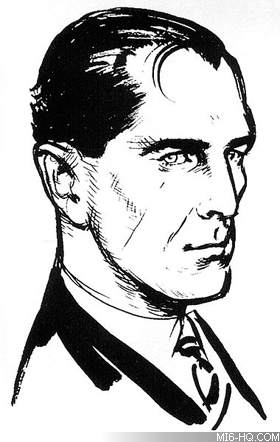
There was something zeitgeisty about Bond's mirroring of the times that added to the eventual success of the novels. Fleming, always the astute guardian of the Bond brand he was creating, continued to have Bond evolve subtly in relation to how society was changing. He accomplished this with deft nuance that kept Bond a relevant and resonant character with his socially/economically diverse readership.
Fleming would have probably preferred to see his creation be immutable but he recognised that Bond would need to continue to develop to reach even broader audiences. Fleming clearly did not believe his original incarnation of Bond was sacrosanct; indeed, he was even willing to see Bond become, of all things, American, in CBS' 1954 dramatization of "Casino Royale" having expressed an interest in Bond becoming a TV or cinematic character for some time before the CBS production. He also continued to moderate Bond throughout the novels, moving him from a somewhat reactionary Times reader to a maybe right-of-center Daily Express. Fleming was cognizant that a little more middle-of-the-road Bond would appeal not only to the "A" class readership he said he aimed the books at, but more to the "B" and "C" readership who bought his books in the millions. Fleming was also influenced by his brief association with erstwhile film producer Kevin McClory and screenwriter Jack Whittingham, moving Bond into a subtly more cinematic character and one who would be a little more palatable to American audiences.
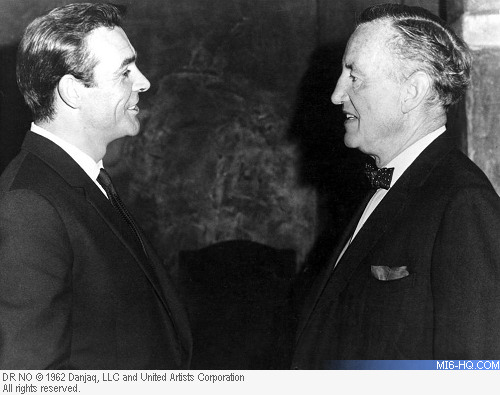
Fleming's Bond was further influenced by EON's vision of what the character was and could be. Broccoli and Saltzman's sensibilities as filmmakers and North Americans altered Bond. Their innate understanding of what kind of Bond would play well at the US box office meant that Bond was never going to be a David Niven type English spy. There would be no pencil thin mustaches, club ties, or the kind of accents heard when riding to hounds. They modernised Bond, making him a little less establishment and a little more a scion of a new meritocracy. The leap from page to screen under the stewardship of Broccoli and Saltzman changed Bond dramatically and permanently. Gone were Bond's more reactionary political commentary, his self-doubt and emotional vulnerabilities, and his world weariness. In their stead EON introduced a cool insouciance, a sense of humor, and an expanded appetite for sex and violence. In many ways, he was a less well rounded character and, ironically, more of the "blunt instrument" Fleming had described his literary creation. Cinema would, however, breathe life into Bond that would banish another description Fleming used in describing Bond. A human, living, breathing, moving Bond was not going to be a "cardboard booby" if EON found the right actor. And they did.
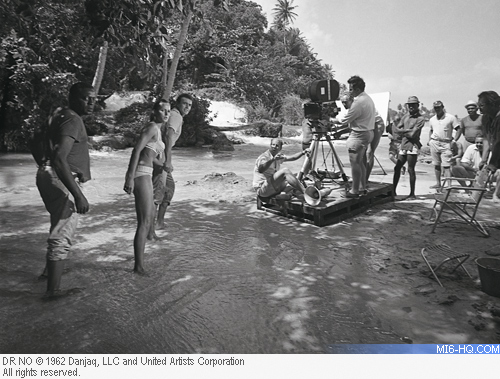
Bond was given life by the brilliant casting of Sean Connery. Connery worked hard to embody the Eton and Cambridge educated Bond but brought his own working-class-boy-making good swagger to the role. He was also imbued with the physicality and the look that exuded the potential for brutal violence that the role required. Here was the actor who made the sex and violence believable yet palatable. Connery was helped enormously by "Dr. No" director Terrance Young not only though the regular relationship between young actor and experienced director but through the understanding of Bond's character. It helped, of course, that Young related to Bond in a way that Connery couldn't for Young, the dashing WW II tank commander with a taste for fine food and wine, tailored clothes, fast cars, and beautiful women clearly saw himself in the MI6 agent. Yet it is Connery's interpretation of Bond that is indelibly stamped on the culture of Bond; so much so that even Fleming would intertextualise Connery's Bond in his remaining novels by establishing a Scots heritage for his spy. Any actor who has subsequently strapped on the Walther has always been measured against Connery.
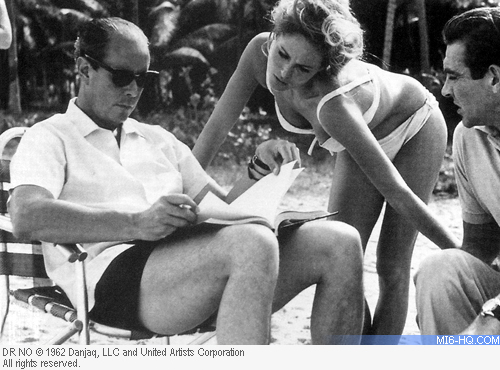
Each of the six Bonds to date has added something to the Bond character and the audiences' perception of it. They have also, perhaps, taken some things away from the Connery prototype. Not only does the physical nature of the actors differ, times change, as do society's mores and values and expectations. Fleming's Bond changed with the times and EON has allowed the cinematic Bond an even greater flexibility in reflecting the times and in changing right along with them. Allowing for new interpretations of the role is part of the magic formula of success. Bond's regenerations don't dilute the essence of the character for we always know what, why, and who Bond is regardless of the era, the actor, or the prevailing zeitgeist.
Although an individual actor can bring subtle character changes the biggest influence on Bond's evolution is, simply, the times. It is inconceivable today, for example, to imagine the pre title sequence for "SPECTRE" focusing on Bond lighting a cigarette and enjoying a smoke (especially if it was the 70th of the day) the way Bond is introduced in "Dr. No". Over time, we've seen Bond's intake of tobacco reduce and eventually end commensurate with society's anti-smoking campaigns. Somewhat inconsistently, however, Bond's drinking hasn't diminished. He still drinks a lot. The British Medical Journal found the literary Bond consumed an average of 92 alcoholic beverages a week. This, they believe, would result in Bond's death at 56, the same age as Fleming, who took to both vices in large quantities. Although the adverse health effects of heavy drinking are well known, drinking is still socially acceptable and, importantly, still something that is commercially endorsable. Again it's impossible to think of a Malboro product placement in a contemporary Bond but it is acceptable for Bond to subtly endorse Heineken beer or Belvedere vodka. Indeed, the Craig Bond is the heaviest drinking Bond across the entire franchise. Also, booze, more than tobacco is inextricably linked to the screen Bond. Clearly, "Shaken not stirred" will continue to be part of the Bond brand.

Bond's attitude towards women, sex, and sexuality has also evolved in relation to broader societal changes. Although some of the early films presented images of strong, independent women any nod to a feminist ideal was undercut by Bond's attitude to such female characters. Even the most ardent of Bond fans can't help feel uncomfortable in the way the first three Bonds treated women physically, sexually, and emotionally. Taking their lead from Fleming's source material, the movies reflected a time where chauvinism, even misogyny, was somewhat socially acceptable. But as society moved towards a greater understanding and acceptance of equality EON fell behind the times. Bond's relationship with the two lead female characters in 1974's "Man with the Golden Gun" is, perhaps, the nadir of Bond's attitude to women. Roger Moore himself admitted discomfort in the scene where he threatens to break Andrea Anders arm while Mary Goodnight possibly marks the low point of the characterisation of a leading female in the franchise. But EON, and Bond, learned and grew. The subsequent film, "The Spy who Loved Me", had a female lead who was skilled, professional, competent, and independent. Although she, like most female leads, ends up being saved by Bond, the female facet of the formula was altered so that the relationship between Bond and the female lead was now intrinsic to the plot and not simple set dressing. Bond has evolved a greater appreciation and respect for women and he no longer relates to them simply as sex objects. Indeed, he's had to relate to one as his boss. The prominence of female characters, and Bond's relationships with them, reflects changes in society and culture. "Skyfall", for example, scrapes a pass in the Bechdel Test that gauges how well developed are a movie's female characters.
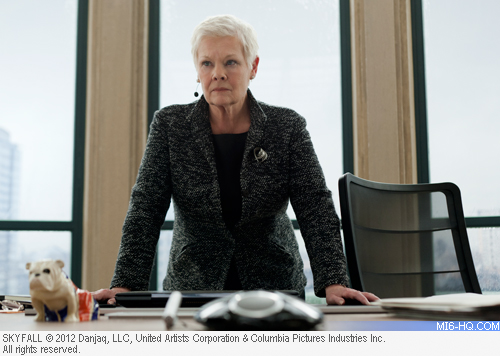
Bond's attitude to female characters and his attitude to sex also mirror society's changing mores. Bond was in the vanguard of the sexual revolution and the swinging '60s. Bond continued to carry on swinging with guilt free sex with numerous women through most of the 1970s but the '80s heralded a new era of sexual responsibility. Bond could no longer have emotionless sex with numerous partners in the era of AIDS. In has become the norm for Bond to have one or two partners through the course of a movie and, importantly, there is now a more genuine emotional attachment to his sexual partner or partners. Bond has evolved as a more respectful and more responsible lover. The contemporary romantic Bond is closer to the Fleming ideal than the libidinous philanderer of the 1960s and '70 films but without Fleming's troubling views on the role of women in society. Too many women in Bond films, however, remain victims of violence.
A view that Bond merely reacts and fails to evolve in response to society is too simplistic. Bond has been ahead of social changes, sometimes behind them, or in the middle of them but the trajectory has always been for Bond to dynamically mirror society's prevailing zeitgeist. Bond remaining contemporary and relative is an intrinsic part of success and enduring appeal of the film franchise. Of course, there are those that will always see overt sexism, classicism, and racism in Bond but for the multi-generational and trans-national audience Bond reflects contemporary society. The arc of the Bond films tells us much about our society, our place in the world, and our sense of ourselves. Indeed, in many ways, Bond reflects what the audiences want to see and believe so that the immutable Bond becomes mutable on a personal level.
Bond will continue to evolve just as society inexorably alters. EON do an incredible job of maintaining the comfortable, familiar facets of the Bond character while keeping him modern, relevant, and something of a lens to the zeitgeist. Recent discussions in the press about the possibility of changing Bond's ethnicity or even gender can be seen as controversial and even troubling. The discussions are, however, welcome and exciting, for what other fictional character inspires such a level of discourse not only just among franchise aficionados but across a broader community? The discussion around the evolving Bond reflects the incredibly influential role Bond has across culture and society.
Share The Story
The opinions expressed in this review are those of the author and do not necessarily reflect those of MI6-HQ.com or its owners.







